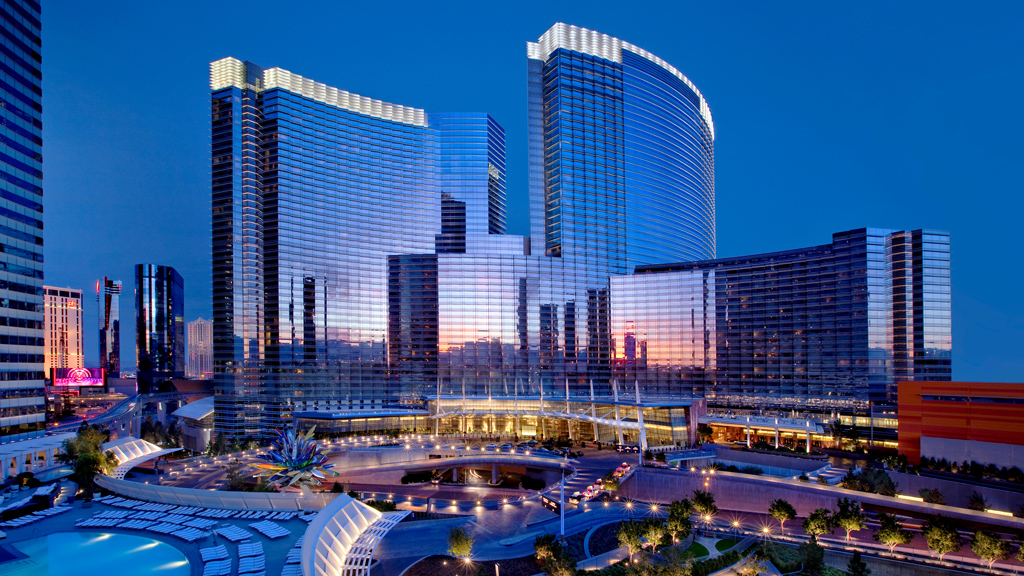The Near Future of Casino and Gaming Design
June 01, 2020
Editor’s Note: This post is part of our ongoing exploration of how design is responding to the COVID-19 pandemic.
For now, Las Vegas Boulevard is a scene of empty sidewalks, boarded up casino doors and entrances, and desolate establishments. On June 4, that’s about to change, as Nevada Governor Steve Sisolak announced that casinos in the state can reopen for the first time since the coronavirus forced the gaming industry to shut down more than two months ago.
What will that look like? How will a city that has averaged 42 million visitors a year, typically in close confines, welcome people back in a way that makes them feel safe and at ease? Just like Las Vegas, other cities that rely heavily on tourism and the gaming industry are taking notes.
Here are some insights that could have implications for gaming environments in Las Vegas and around the nation:
Short-term design strategies
1. Prioritize physical distancing.The Nevada Gaming Control Board, which regulates gaming and law enforcement of Nevada gaming laws throughout the state, has issued guidelines for re-opening casinos. This includes limiting occupancy by 50% to physical distancing protocols on the gaming floor, such as regulating the number of players per each blackjack table to three, four per each roulette and poker tables, and six players per each craps table. In addition, proper physical distancing will need to be implemented between slot positions, where every other chair has to be removed to prevent guests from sitting in close proximity to each other.
2. Ramp up cleaning and sanitization protocols.Hotel and casino operators should implement disinfecting plans for table games, cards, chips, and every touchpoint where guests and employees come in contact. Hand sanitation and disinfecting wipe stations should be located throughout the casino for both patron and employee use. Some are also installing gaming barriers using materials like plexiglass or acrylic dividers at card tables and slot machines to separate players from dealers, and from each other.
3. Re-examine the tactile gaming experience.When casinos in Macau reopened their doors after a 15-day shutdown, they began cleaning their poker chips after each handle. Casinos in Las Vegas will face a similar challenge, and will need to reexamine how frequent sanitization might impact the tactile gaming experience. Handling chips, cards, and dice is the basic exchange of value that the gaming industry has been founded on and is inherent in the gaming process. The act of pulling a slot machine handle, for instance, has been reserved for a nostalgic gaming experience. While most slot machines have been replaced with pushing a button to activate the game, there is typically a required form of contact. If a slot machine is not cleaned between each player, this puts the player in contact with a surface that others may have already touched.
4. Design gaming surfaces with antimicrobial materials.Among the most important considerations are the gaming surfaces that players can encounter, and how surfaces can be reevaluated to reduce the transmittance of the virus. This can be achieved with replacing casino equipment with antibacterial surfaces or adding antimicrobial coatings at table game elbow rests, playing surfaces, lower drink rail surfaces, or even at slot machine surfaces. Just one caution: the science and understanding of these antimicrobial technologies is still emerging, so it is important, particularly in the near term, to consider only those materials that are dimensionally stable and will not result in unintended exposure and alternative health risks at a later date.
5. Integrate hands-free technology.Restrooms should be upgraded with hands-free technology at all interfaces such as at stall doors, faucets, and hand dryers. Even adding hand washing stations within the gaming floor could be considered as a means of maintaining a player hygiene.
The future of gaming: mobile and digital
This global crisis has disrupted the gaming world due to frequent exchanges of individual and communal play. As the industry continues to find solutions to safely reopen without sacrificing the guest experience, casino operators now look to digital and mobile.
1. Bridge physical environments and digital interfaces.Whether you are touching a chip or grabbing a card, gaming is a moment in time where your mind engages your body in a euphoric state of adrenaline and thrill. A digital interface can result in the same satisfaction as that of grabbing a card, throwing dice, or pushing a slot machine button. With mobile gaming’s growing popularity, intertwining the gaming experience to one’s own personal cell phone might be key to minimizing physical interaction. The future of gaming is on a course towards online gaming, or what we call “online social casinos,” and now might just be the perfect opportunity to bridge the two worlds.
2. Introduce gaming hubs and lounges.For states where online gambling is legal within the confines of a casino, gaming hubs can be designed as part of the gaming floor where patrons could gamble on their smartphones rather than at physical tables or slots. These spaces could be envisioned as gaming lounges with comfortable furniture and cocktail service where players can access any game on the casino floor, without the need to hop from one machine to another, thereby limiting cross-contamination.
3. Digital experiences can elevate the guest journey.Online gaming may offset the need for physical games that come with heavy leases and take up significant real estate and infrastructure on the gaming floor. This could also appeal to a younger generation of gamers who prefer to use their own mobile devices over physically being stationed at a slot machine or table game. When successfully integrated into physical gaming environments, technology can create memorable and interactive experiences that draw next-gen players.
So what’s next for the gaming industry? It’s about reinventing physical gaming environments while strengthening our digital connections. For this industry to successfully evolve and respond to COVID-19, we must find ways of adapting, implementing safer solutions, and creating new and engaging experiences.
For media inquiries, email .
